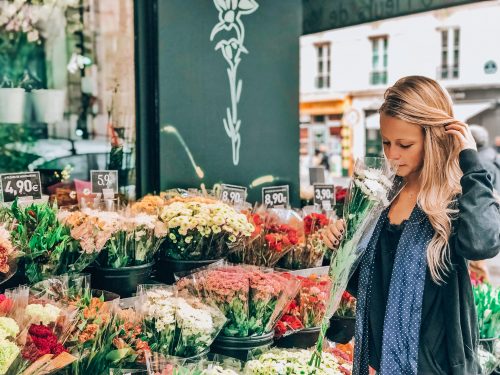 9 Things To Make You Fall Hopelessly in Love With Paris
9 Things To Make You Fall Hopelessly in Love With Paris
There’s a reason Paris is known as the City of Love. Everything — from its charming streets to ornate architecture, the café culture…
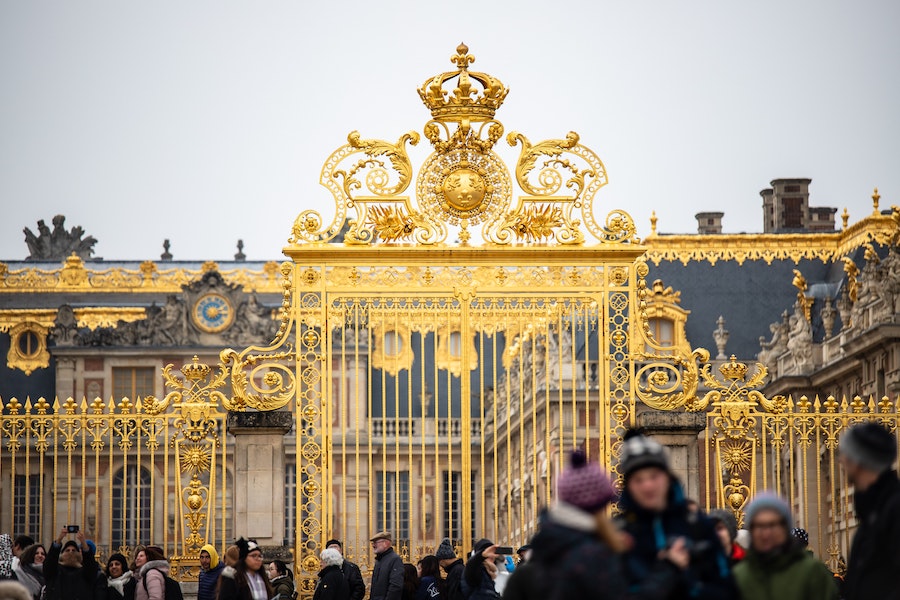
However long your trip to Paris is, don’t forget there’s more to see just outside the city limits. One of the best day trips from Paris is the Palace of Versailles. It’s home to stories of Marie-Antoinette and other royals who were part of the French Revolution. Even though you’ve come all this way for the City of Light, I guarantee you won’t be disappointed making a little time for this impressive palace.
Traveling to Versailles from Paris is relatively easy compared to other day trips from Paris. The best way to get there, financially and time-wise, is to take the train. The cost of a roundtrip is around €7 on the RER C train line and takes around 60-90 minutes to arrive at the palace depending on your starting location.
To use the metro to reach the RER C train line, you’ll have to get on the line in the station closest to your hotel and take it to a station that shows a small RER C option on the line on top of the train window. The best way to go about navigating the metro is to download Google Maps or another app with GPS and directions.
Once on the RER C line, your destination will be the Versailles Château–Rive Gauche station. Exit the station with the rest of the travelers, most likely heading to the same destination as you, especially if it’s the weekend. Take a right on Rue Royale, then a left on a grand boulevard called Avenue de Paris, which — you guessed it — has the Palace of Versailles at the end of the street.
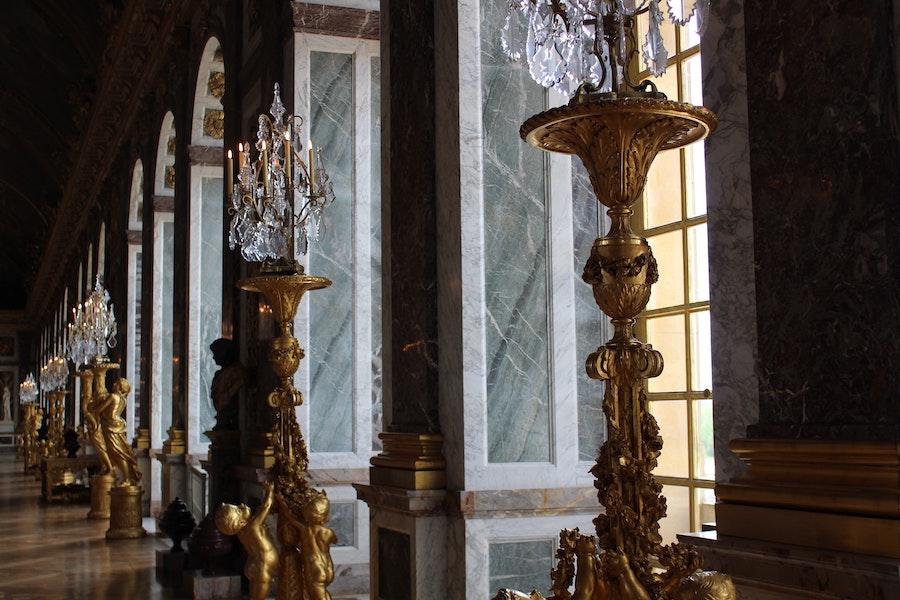
The Palace of Versailles is the height of extravagance, but it wasn’t always this way. It began as a hunting lodge for King Louis XIII in the 1620s.
The palace is — let’s call it large: 700 rooms, two floors, 2,000 windows, and 67 staircases. The grounds around the palace cover nearly 2,000 acres.
Fun fact: The palace first opened to visitors in 1682. They had to wear a hat and carry a sword, which could be rented at the entrance of the palace. Things are a little different nowadays, which I’ll cover below.
With around 10 million visitors a year, the palace is one of the most visited museums in the world. It gives real insight into the world of King Louis XVI and Marie-Antoinette in the years leading up to the French Revolution. Tour furnished rooms filled with period decor, paintings, murals on the ceilings, and antique furniture, all looking like they haven’t been touched since before the revolution.
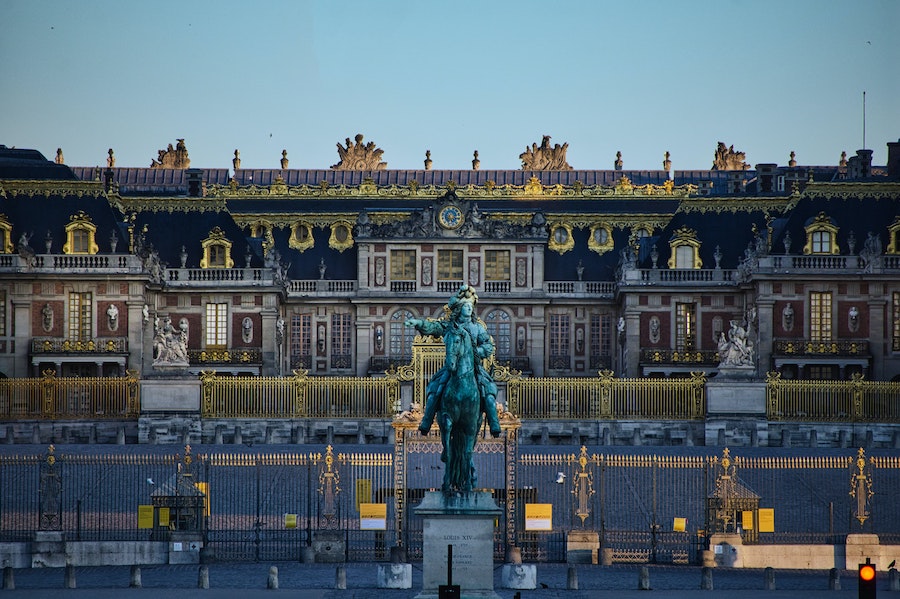
Versailles is breathtaking. I remember when I went, I couldn’t believe my eyes. It matched all my childhood expectations of what a magical palace would be like. On top of this fairy-tale aspect, King Louis XIV, right at the entrance with his equestrian statue, was almost too much for my French royalty fascination.
You can experience the exhibits with the audio guide or through a guided tour. I highly recommend listening to the audio guide, which comes in multiple languages, including English.
I probably stayed in each room for 15-25 minutes enjoying all the interesting information being shared on the audio guide and matching what I saw, especially in the Hall of Mirrors.
During this part of the visit, you can walk through and view the decoratively furnished rooms. Here are a few of the most popular places inside the palace.
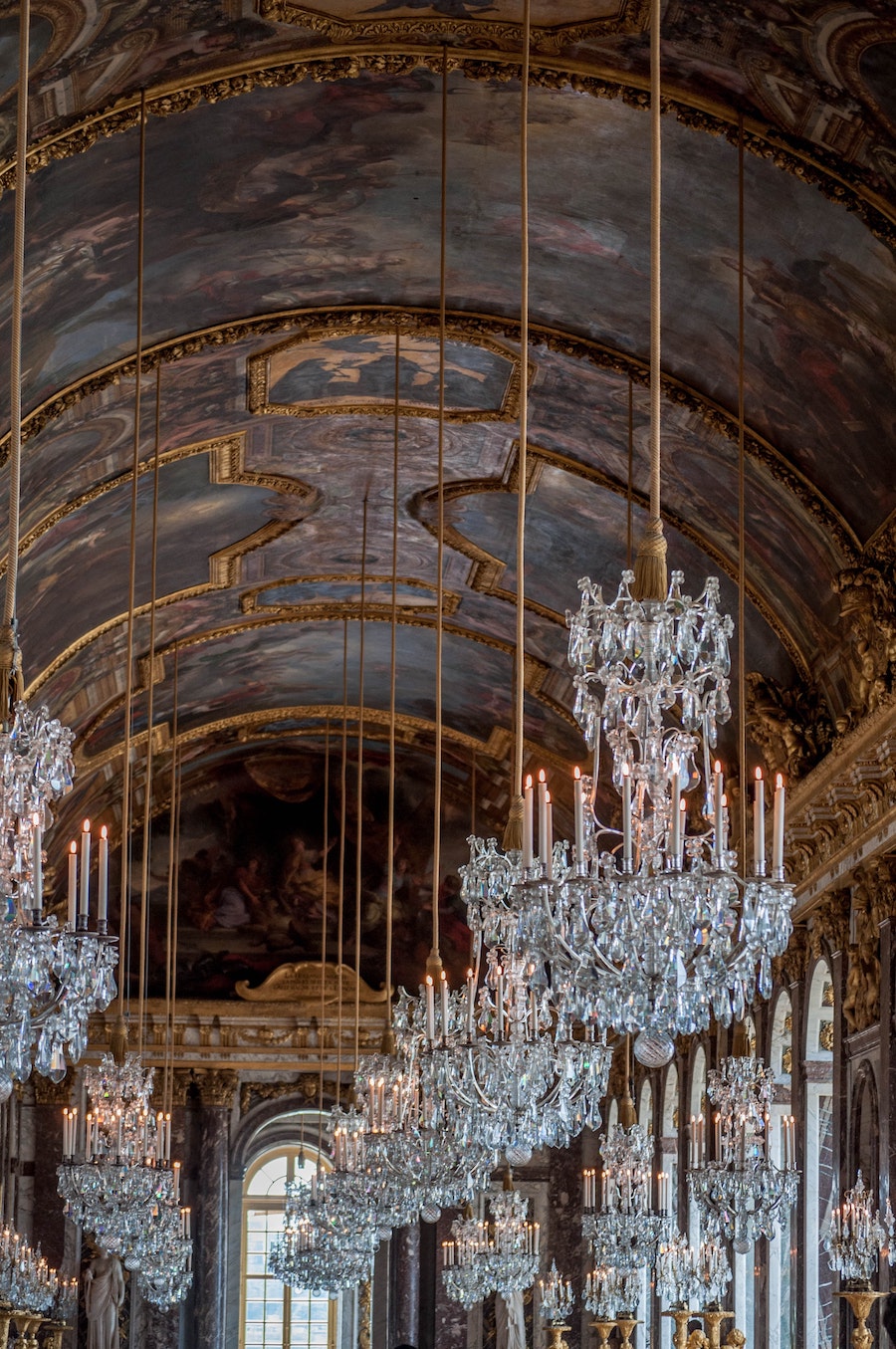
This is one of the most famous rooms inside the palace. It was first designed as a large terrace which opened to the garden. Not surprisingly, the room was subject to bad weather sometimes, so it was converted to a gallery, finished in 1684.
When I entered the hall, I saw many in the crowd taking selfies around the room. Just think — once upon a time, this elegant gallery was used for diplomacy and entertainment, including the wedding of Marie-Antoinette and Louis XVI and the signing of the Treaty of Versailles.
Nearly 240 feet long, the hall has 357 mirrors and is the ultimate place to take photos while you’re visiting. But don’t ignore the gorgeous story painted on the ceiling. You will see victory and success illustrated in beautiful paintings commemorating the first 18 years of King Louis XIV’s reign and making references to the art in the “War Room” of the palace. Most of these paintings were done by Charles Brun, head painter to King Louis XIV.
Did you know? The 2006 film, “Marie-Antoinette,” shot some scenes in the real Hall of Mirrors here at Versailles. Woody Allen’s “Midnight in Paris” had a scene here, too. So not only is this a historic hall, but you could argue it’s a hall of movie stars, too.
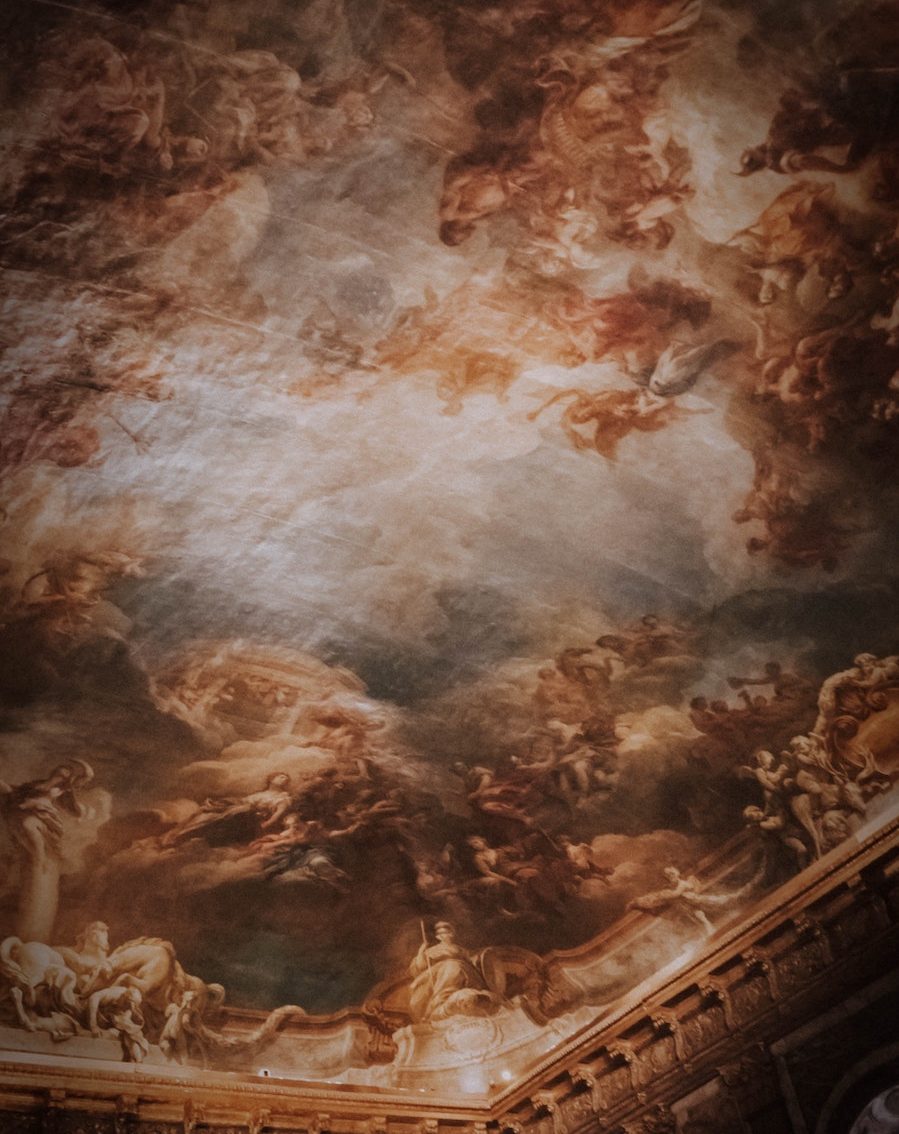
Like the Hall of Mirrors, the Royal Opera is an incredible sight. Here, you can step into the luxurious concert hall which was commissioned during the reign of King Louis XV by the architect Ange-Jacques Gabriel in 1770.
At the time, the Royal Opera was a feat of technical achievement with its architectural ingenuity and ability to host large spectacles for audiences of up to 1,500 people. At one point, it was even the largest concert hall in Europe. The venue hosted opera and much more: theater, balls, feasts, and more.
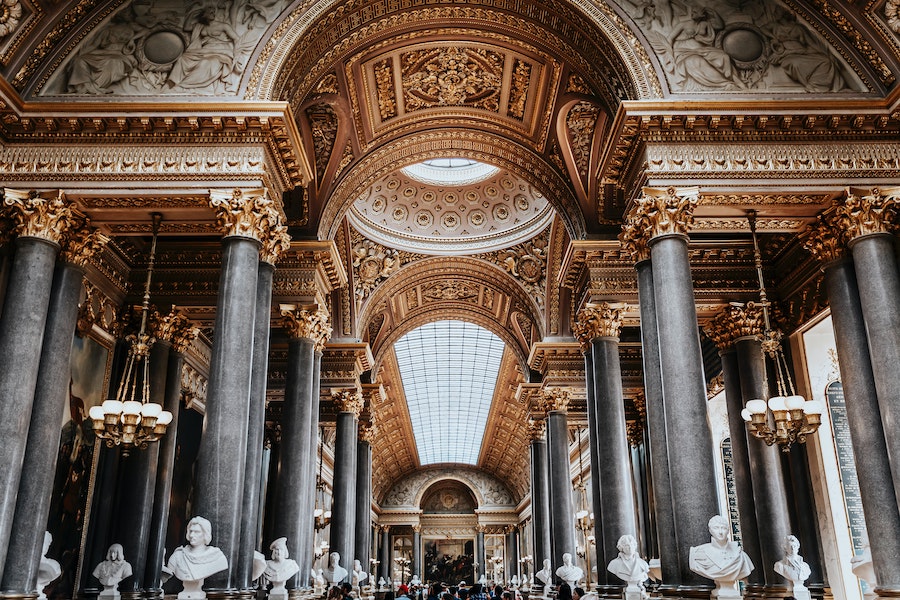
This gallery is filled to the brim with portraits of leaders and brutal fights. While battles aren’t my favorite, the history here is fascinating. I learned so much from my walk-through of this gallery.
With nearly 15 centuries of French military grandeur on the walls of this gallery, this room is the largest in the palace and one of the first to be commissioned by King Louis-Philippe for his museum of French history. It displays works of art depicting all the glories of France, meant to show the nation that they were ready, as a whole, to face a new era of peace.
What I found most interesting was seeing the statues of the heads or busts of officers killed in battle and memorialized here. Believe it or not, this museum has remained intact since its opening in 1837.
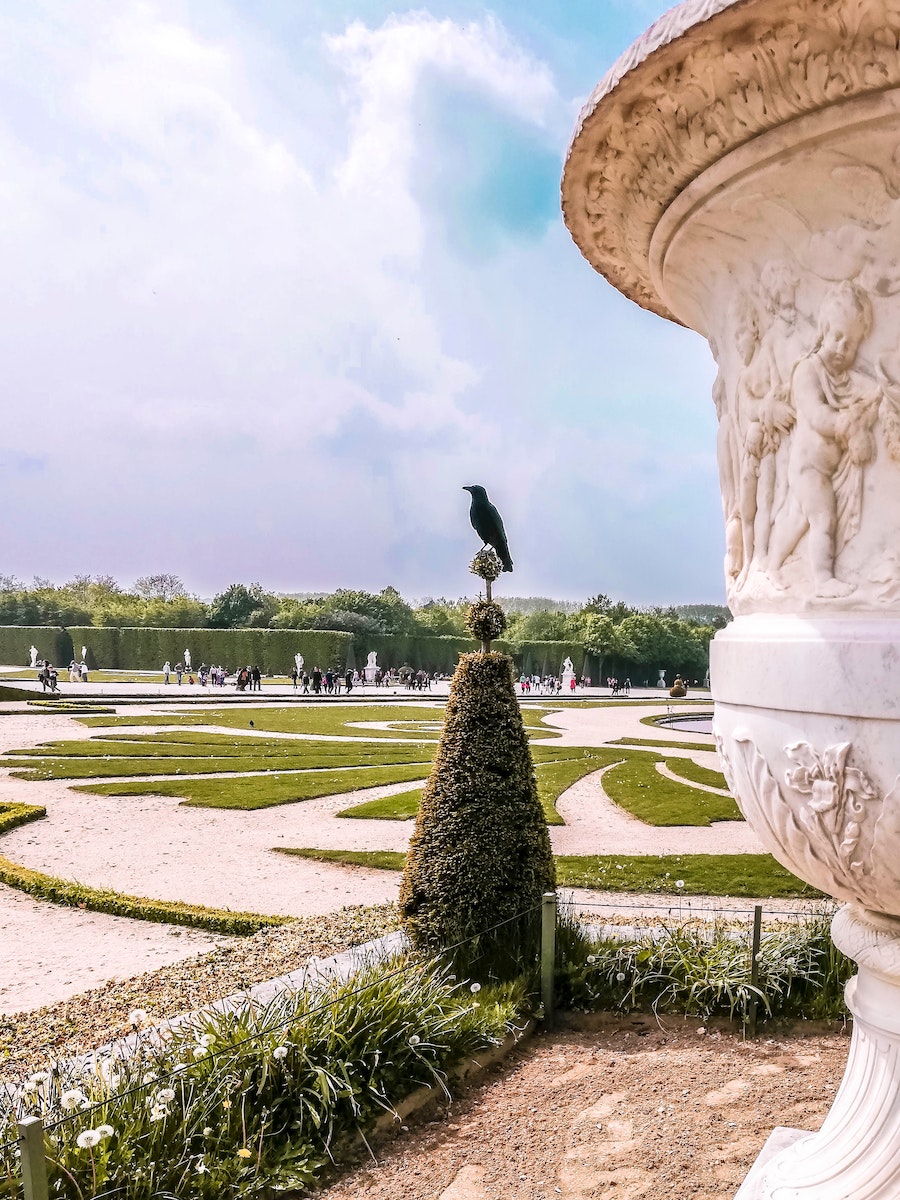
The gardens of the estate cover 190 acres. In 1661, André le Nôtre was commissioned as head landscape designer and gardener to King Louis XIV. His job? Creating these beautiful gardens.
It took over 40 years, but thanks to his hard work, you can now picnic and explore for hours along the estate and still be surrounded by gorgeous floral displays, rows of trees, 55 fountains, several sculptures, and more.
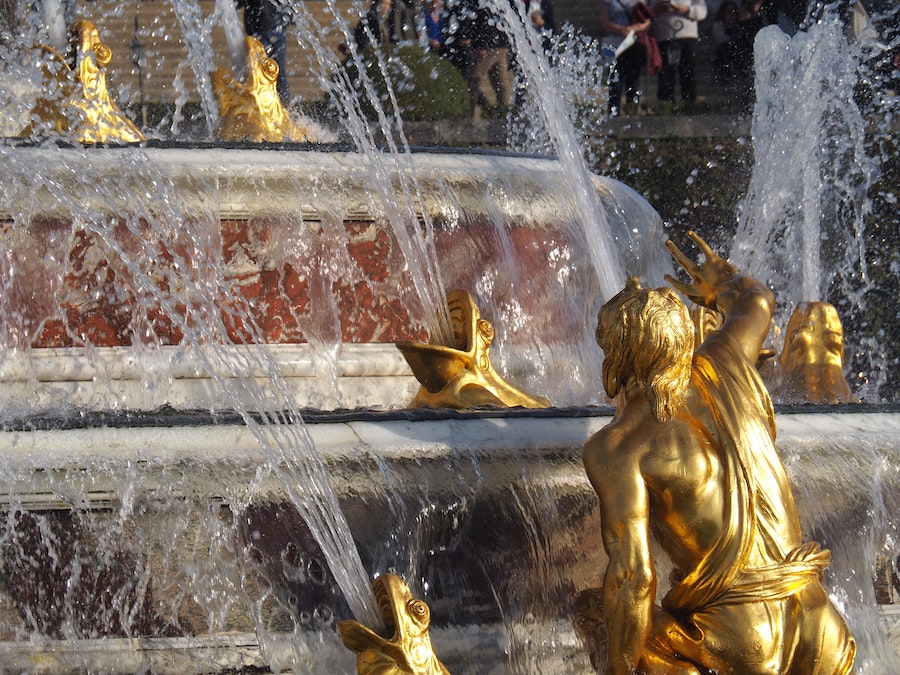
One of the most famous fountains on the grounds is the Latona Fountain, built in marble and gold, with sculptures dotting its multiple tiers. Created in 1670, it inspired by Ovid’s “Metamorphoses,” the legend of some unfortunate peasants who tried to prevent the goddess Latona and her children from drinking water from the fountain — and were turned into amphibians.
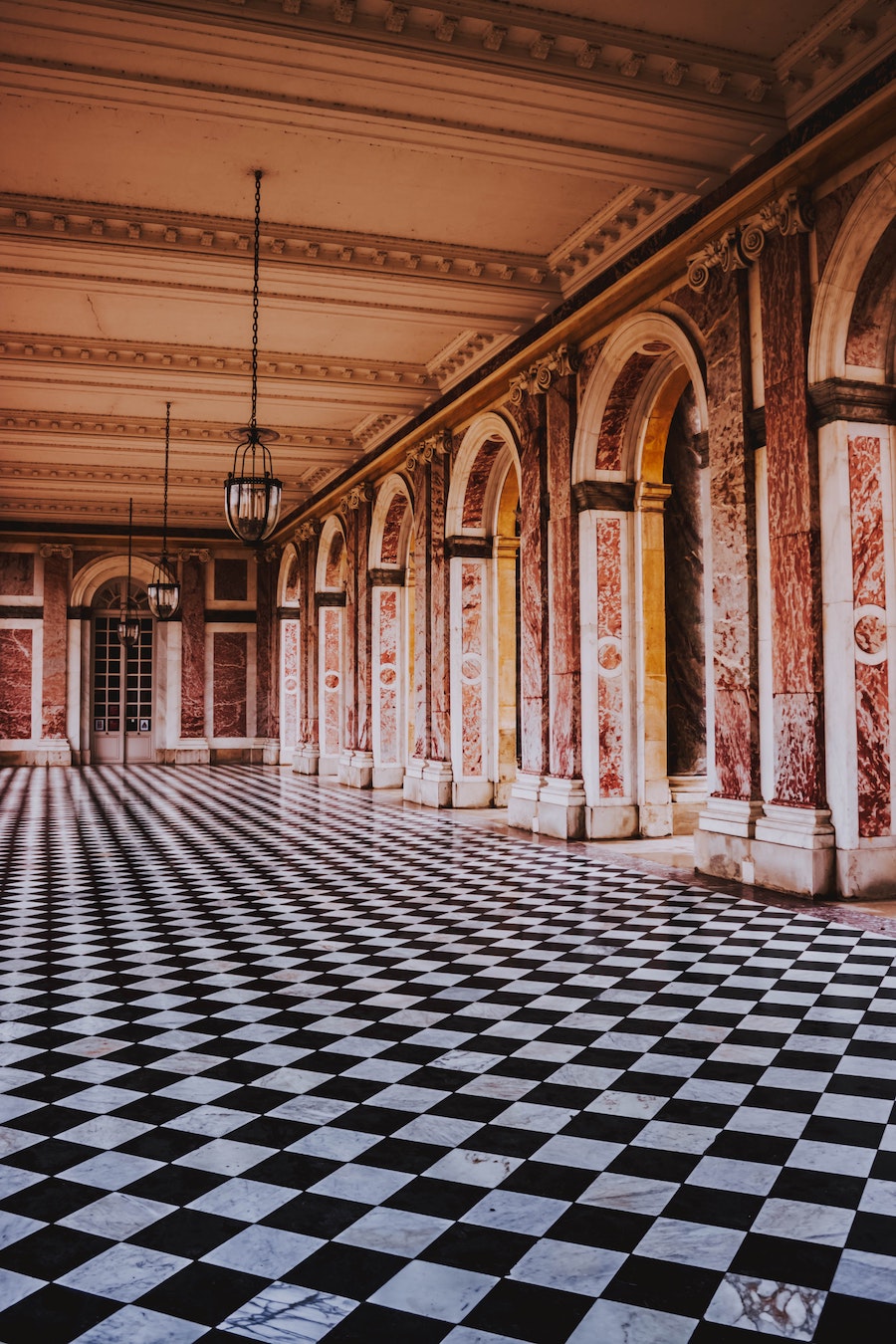
This was a great feature to explore when I last visited with my family. The Grand Trianon is an exceptional piece of architecture, with columns in the central gallery which open out to the courtyard. The floor had tiles in black and white, and the columns are of pink marble.
To me, it has almost a modern chic, unlike the rest of the palace’s furnishings and architectural detail, which feature more classic and traditional French styles. The architectural design of the columns is called “peristyle,” meaning the columns surround the building. It’s also heavily influenced by Italian architecture, with a courtyard and a large garden on either side.
The Grand Trianon was ordered by King Louis XIV and constructed under the leadership of Jules Hardouin-Mansart beginning in 1687. It was originally a place for the king to lead his personal life with his mistress and spend some time away from the prying eyes of the palace.
Inside the Grand Trianon, you can explore the Queen’s State Apartments and the King’s State Apartments. Outside, the Grand Trianon overlooks its own gardens, geometric and filled with flowers.
Fun fact: The paintings in the palace are inspired by the gardens of the Grand Trianon, which makes this a must-see for when you visit the Palace of Versailles.
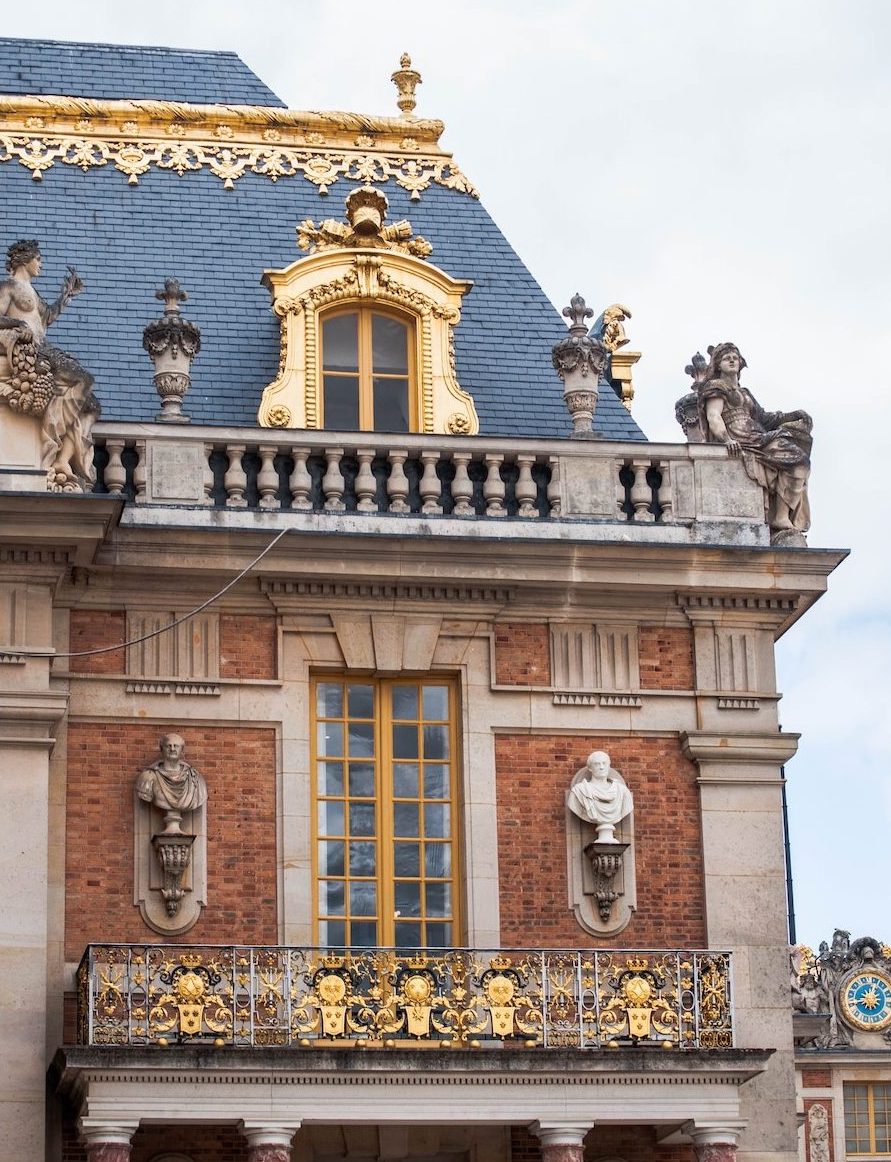
The Petit Trianon (meaning little trianon, or villa) was built in 1768 by Ange-Jacques Gabriel. Don’t confuse it with the Grand Trianon, mentioned above. Louis XVI gave this smaller trianon to his wife, Marie-Antoinette. She was just 19 years old at the time.
When I visited, I was only able to enjoy it from the outside, but I still was able to experience Marie-Antoinette’s influence over this space. She was heavily involved with the design of the English gardens outside the Petit Trianon. Her apartments on the mezzanine floor opens onto them with a full view of the gardens and the Love monument (discussed below) right outside.
If you’re able to go inside on a guided tour, there are some interesting things to see. One of these is Marie-Antoinette’s “moving mirror room,” made of wooden panels to cover the full-length windows for privacy.
The Temple of Love, sometimes called the Love Monument, is part of Marie-Antoinette’s Petit Trianon estate. In 1777, she commissioned the monument — the Temple d’Amour in French — from Richard Mique, the same architect who designed the English gardens for her Petit Trianon.
The temple is gorgeous, with columns surrounding the central sculpture. Appropriately, it’s an angel with his bow and arrow, overlooking the water from his island view.
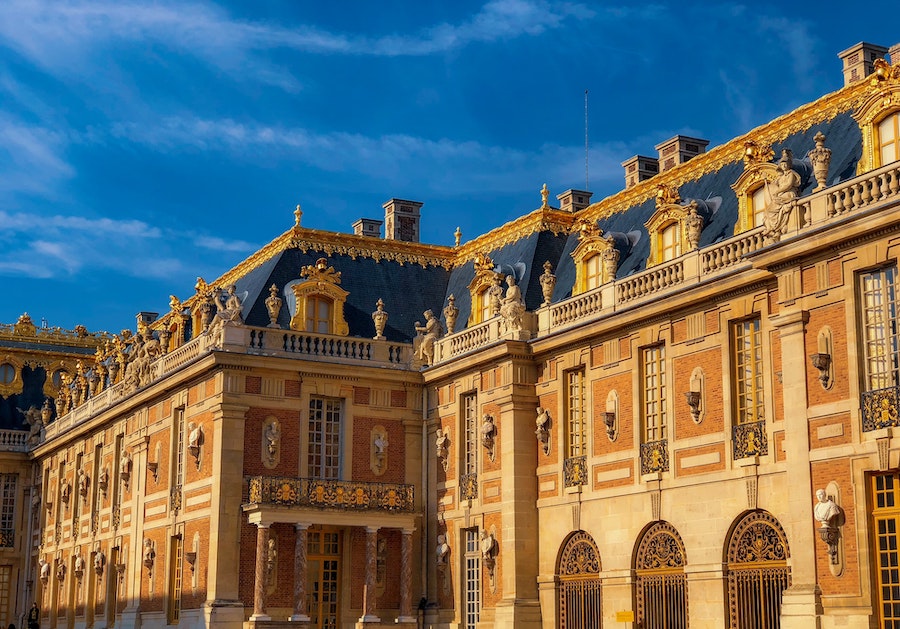
The Palace of Versailles and the grounds may seem overwhelming at first, but I’m here to help with answers to questions visitors ask us the most.
If you’re under the age of 18 or a European Union resident under 26, you can enter the palace and gardens for free. All you have to do is show documentation at the entrance, usually your student card or passport.
Travel hack: Although it’s not the official policy, you can still try this hack. From my own experience (at least three times) and that of my friends, security at the entrance to the palace has been lenient in the past letting non-EU residents under 26 in for free. You’ll need your passport, and definitely be prepared to pay if needed, but it doesn’t hurt to ask.
For paying tickets, though, it’s not too bad considering all you get to see. The Palace of Versailles is requiring everyone to purchase tickets with timed entry. I recommend the “Passport” ticket, which allows access to the entire estate. That’s the palace, Petit Trianon, Grand Trianon, temporary exhibitions, gardens, and the musical fountain shows and musical gardens.
I recommend buying tickets online for now, due to the new timestamp. This means, you will be able to enter within 30 minutes of your entry time. But it’s usually smart to get your tickets ahead of time anyway to avoid the long lines at the entrance. You can buy tickets on the Château de Versailles website.
When I’ve visited in the past I usually spend around five hours just exploring the palace and gardens before enjoying a well-deserved visit to Angelina, a tea salon located in the gardens of Marie-Antoinette’s estate.
If you are pressed for time or looking to schedule half a day to see Versailles, it’s definitely possible. You can skip the line for the audio guide at the palace by downloading the free app that houses all of the Versailles related audio guides in 11 different languages. To tour the inside of the palace thoroughly, it takes around 2-3 hours. Allow longer if you want to explore the gardens.
Weekends are the busiest, and the château is closed Mondays. If you can, try to go during the week, such as a Wednesday or Thursday, during non-peak hours from 10 a.m. to 3 p.m.
Crowds are also lighter in the low season, making November through March good months to visit. However, for optimal garden viewing, it’s definitely best to arrive in the warmer months, April to October, so you can witness the flowers in bloom.
Photography is permitted in the gardens and on the grounds, but inside the palace is a different story. You must take your photos and selfies without flash. Make sure to pay attention in each room for signs warning you about photography — certain exhibits don’t allow any photography at all.
Backpacks are allowed on your trip to Versailles, but no food is permitted inside the palace. You can bring a picnic to eat on the grounds if you skip the tour inside the palace.
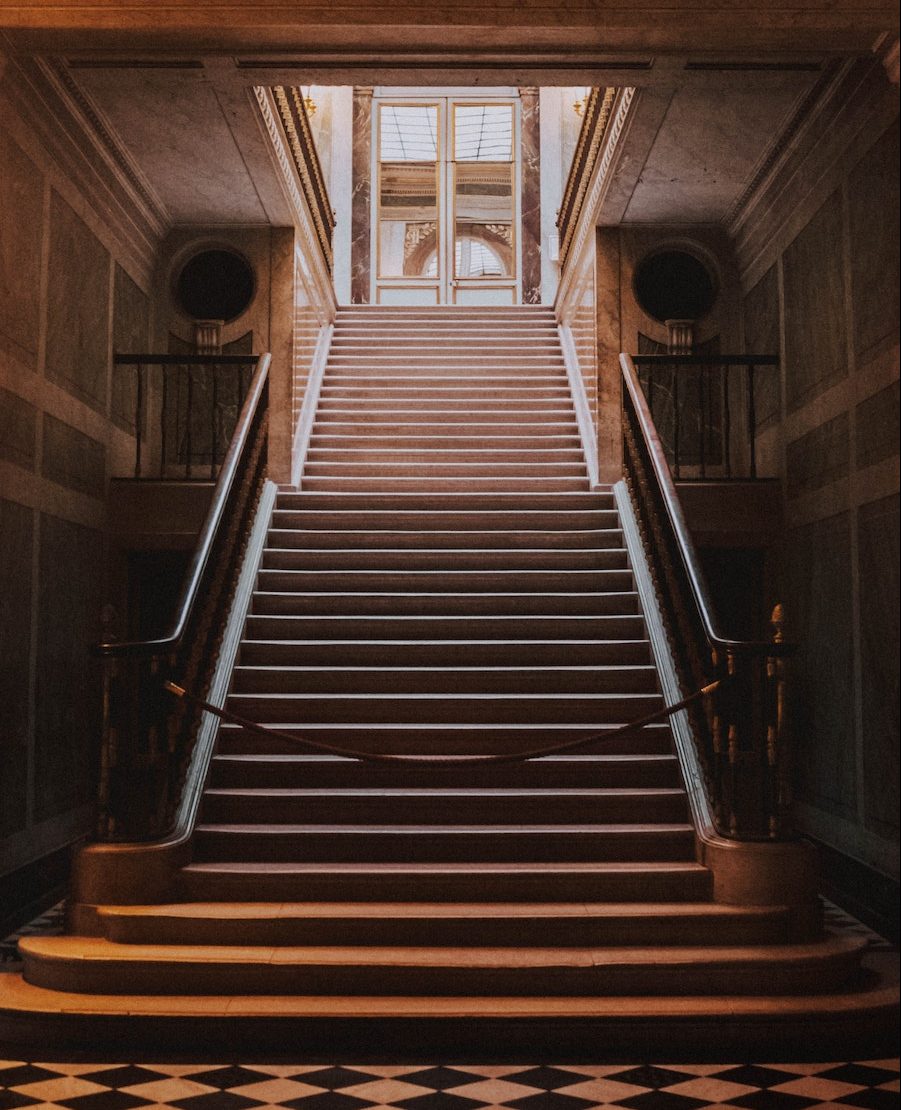
There’s a wealth of things to do at the palace, both inside and out. It’s an absolute treat to share with family and friends, especially if you’re interested in French history.
And this introductory guide covers only part of what you can see here. There are plenty more statues, fountains, rooms, galleries, and gardens for you to discover. It’s one of the best day trips from Paris, and certainly worth it if you have the time to spare. Looking for more adventures in Paris? Check out our Paris tours.
However you choose to travel, don’t miss this must-see just outside Paris. It’s truly glorious!
 9 Things To Make You Fall Hopelessly in Love With Paris
9 Things To Make You Fall Hopelessly in Love With Paris
There’s a reason Paris is known as the City of Love. Everything — from its charming streets to ornate architecture, the café culture…
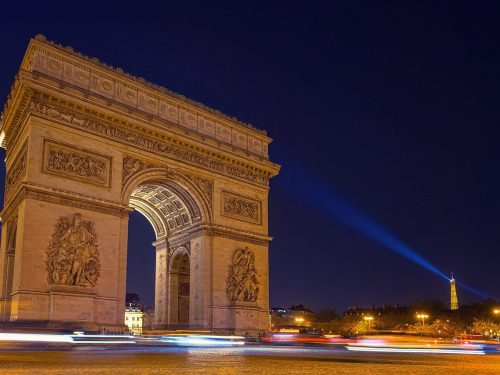 Everything To Know About the Arc de Triomphe Before You Go
Everything To Know About the Arc de Triomphe Before You Go
Paris is not only a city of lights, but of breathtaking monuments. It’s no surprise the most celebrated monument in the city is…
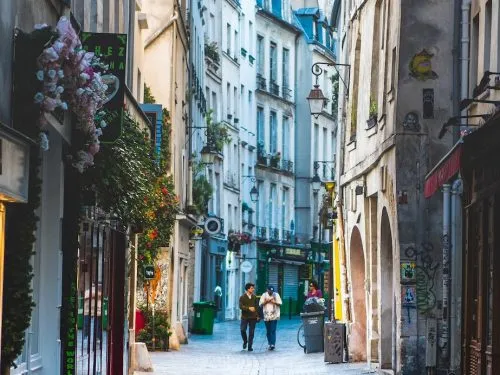 8 Must-See Spots in the Marais to Discover the Real Paris
8 Must-See Spots in the Marais to Discover the Real Paris
The first time I strolled through the Marais, it was clear that this was the district that embodied a new-bohemian — and slightly…